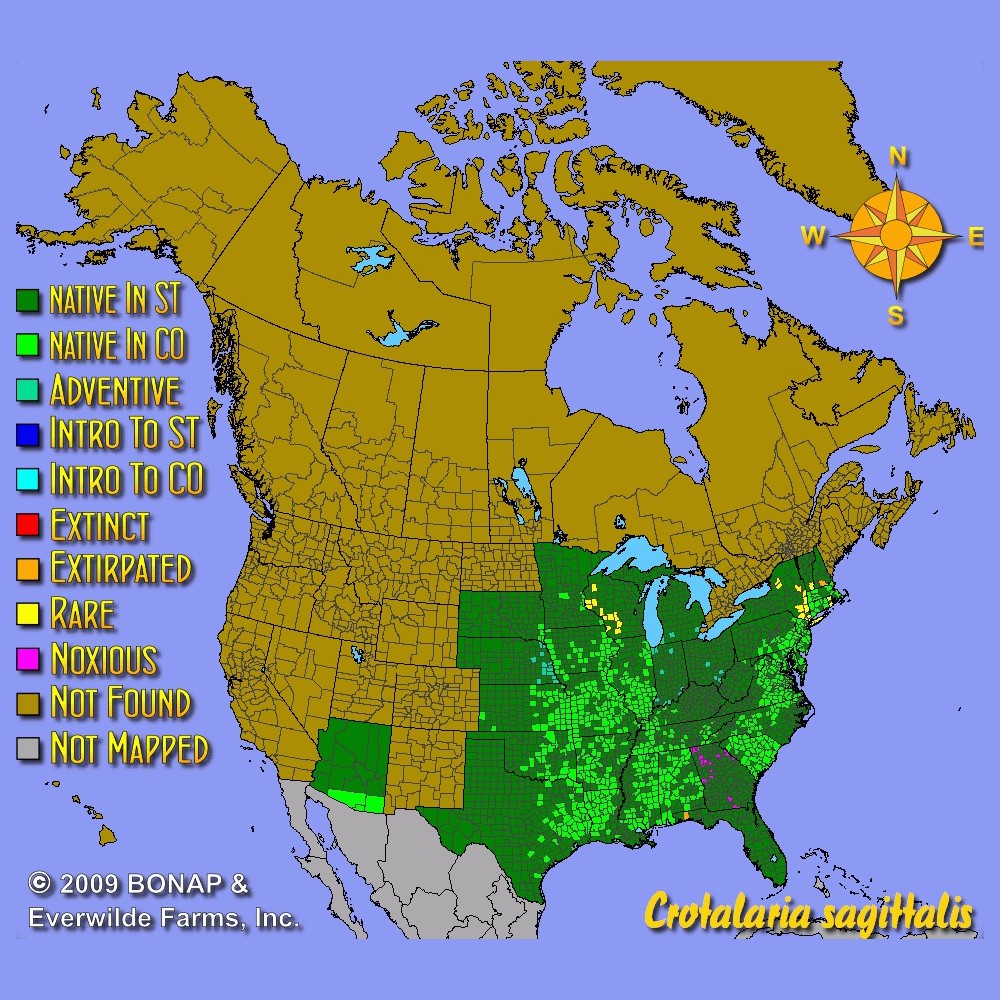Rattlebox Seeds
- HOW TO GROW
- FAST FACTS
- REVIEWS
HOW TO GROW
Sowing: For best germination, this Crotalaria Sagittalis seed should be scarified; one method of accomplishing this is to pour hot water over the seed and let it soak overnight the day before planting. Sow just below the surface of the soil, keeping the soil lightly moist until germination.
Growing: This plant adapts well to sand, gravel, or clay soil. It prefers dry conditions, and will not need watering unless drought conditions persist. For the healthiest growth, keep weeds down to a minimum; this plant does not do well with competition. It will reseed itself, producing volunteer plants next year. This plant attracts bees.
Harvesting: This small wildflower is best displayed in the garden or prairie, and does not make a suitable cut flower. Keep in mind that the entire plant is toxic to horses and other grazing animals.
Seed Saving: After blooming, the plant will produce rounded 1-2" seed pods that ripen from green to dark brown. As soon as the pods turn brown, remove them and spread them out to dry away from direct sunlight. Split the pods open and take out the seed. Store rattlebox flower seeds in a cool, dry place.
FAST FACTS
Common Names: Arrowhead Rattlebox
Latin Name: Crotalaria sagittalis
Species Origin: US Native Wildflower
Type: Native Wildflowers
Life Cycle: Perennial
USDA Zones: 4, 5, 6, 7, 8, 9
US Regions: Arid/Desert, Plains/Texas, Midwest, Northeast, Southeast
Seeds per Ounce: 3,900
Stratification: No Stratification
Germination Ease: No Stratification
Sunlight: Full Sun
Height: 14 Inches
Color: Yellow
Bloom Season: Blooms Late Summer, Blooms Early Fall
5 Stars for now....
I am planting these this long holiday weekend, so I'll know more in a few weeks. I love this site, love the buying experience and the quick shipping. My new place for wildflower seeds!
DESCRIPTION

HOW TO GROW
Sowing: For best germination, this Crotalaria Sagittalis seed should be scarified; one method of accomplishing this is to pour hot water over the seed and let it soak overnight the day before planting. Sow just below the surface of the soil, keeping the soil lightly moist until germination.
Growing: This plant adapts well to sand, gravel, or clay soil. It prefers dry conditions, and will not need watering unless drought conditions persist. For the healthiest growth, keep weeds down to a minimum; this plant does not do well with competition. It will reseed itself, producing volunteer plants next year. This plant attracts bees.
Harvesting: This small wildflower is best displayed in the garden or prairie, and does not make a suitable cut flower. Keep in mind that the entire plant is toxic to horses and other grazing animals.
Seed Saving: After blooming, the plant will produce rounded 1-2" seed pods that ripen from green to dark brown. As soon as the pods turn brown, remove them and spread them out to dry away from direct sunlight. Split the pods open and take out the seed. Store rattlebox flower seeds in a cool, dry place.
FAST FACTS
Common Names: Arrowhead Rattlebox
Latin Name: Crotalaria sagittalis
Species Origin: US Native Wildflower
Type: Native Wildflowers
Life Cycle: Perennial
USDA Zones: 4, 5, 6, 7, 8, 9
US Regions: Arid/Desert, Plains/Texas, Midwest, Northeast, Southeast
Seeds per Ounce: 3,900
Stratification: No Stratification
Germination Ease: No Stratification
Sunlight: Full Sun
Height: 14 Inches
Color: Yellow
Bloom Season: Blooms Late Summer, Blooms Early Fall
Reviews
Review
5 Stars for now....
I am planting these this long holiday weekend, so I'll know more in a few weeks. I love this site, love the buying experience and the quick shipping. My new place for wildflower seeds!



